Market
Market Dynamics Around Token Unlocks
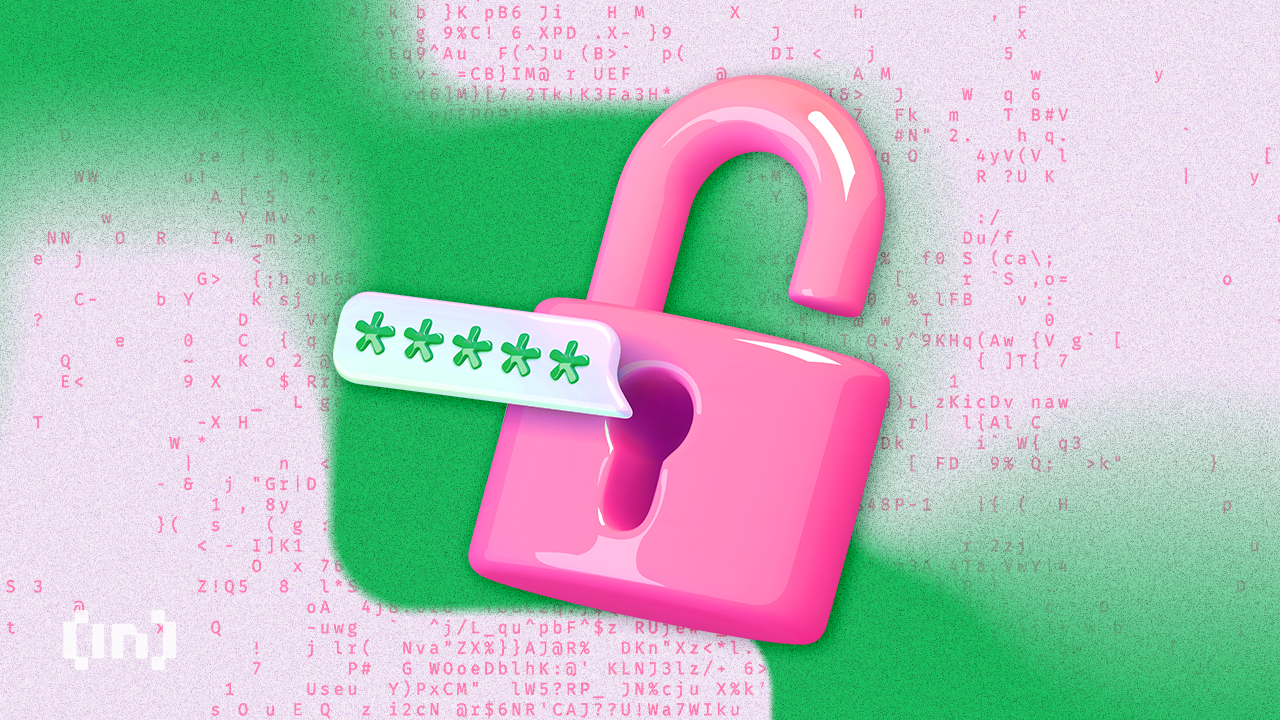
Token unlocks are more than just scheduled events; they are critical market drivers. Whether causing price suppression, volatility, or ecosystem growth, their impact is undeniable. Keyrock, a cryptocurrency market maker, published a report on token unlocks and how these events affect the market.
The research highlights that token unlocks, though predictable, have significant impacts. Leveraging insights from the study enables crypto market participants to navigate these events more effectively, transforming potential disruptions into opportunities.
Keyrock Research Unveils Insights on Token Unlocks
The study examined more than 16,000 token unlocks, shedding light on the substantial effects these events have on market behavior. The findings of the research provide valuable insights for traders and investors alike. Every week, over $600 million worth of tokens enter circulation due to unlocks. Despite their frequency, the market reaction to these events is almost uniform.
“Understanding unlock schedules is no longer optional for traders. It’s essential for timing market entries and exits effectively,” the research highlighted.
According to Keyrock, 90% of unlocks create negative price pressure. This is true regardless of the size, type, or recipient of the tokens. Interestingly, price impacts often begin well before the unlock date, likely as community members front-run the event. Bigger unlocks amplify this effect, causing sharper price drops (up to 2.4 times greater) and increased volatility.
Of note is that token unlock events typically follow structured schedules outlined in vesting tables. These schedules can range from single large releases (cliffs unlocks) to continuous monthly distributions (linear unlocks). Keyrock’s research categorizes these events by size, establishing that smaller unlocks, while less impactful individually, can create cumulative price suppression.
- Nano (<0.1%) and Micro Unlocks (0.1%-0.5%): Minimal impact.
- Small (0.5%-1%) and Medium Unlocks (1%-5%): Capable of influencing market sentiment.
- Large (5%-10%) and Huge Unlocks (>10%): Significant events with high market impact.
For traders, the size of an unlock determines its importance. Huge token unlocks, though initially disruptive, often spread their effects over time, leading to a more gradual price recovery.
Besides size, the type of recipient receiving the unlocked tokens also significantly influences price dynamics. Assessing the unlock recipient’s profile is crucial for determining the potential market impact. Keyrock has identified five primary categories in this context.
Team Unlocks
These are the most detrimental, leading to average price drops of up to 25%. Uncoordinated selling by team members, coupled with a lack of strategic measures to minimize market impact, exacerbates the situation. Often treated as compensation, these tokens are sold quickly to address financial needs, resulting in sharp price declines.
“Team unlocks exemplify how lack of planning can amplify market disruption,” the report noted.
Therefore, traders should avoid entering positions during these unlock periods or even during the linear distribution that often follows.
Investor Unlocks
Managed strategically and exhibited controlled impacts due to advanced hedging and liquidation strategies. Interestingly, investor unlocks exhibit more controlled price behavior compared to team unlocks.
Early investors, often from venture capital (VC) backgrounds, employ advanced strategies such as OTC deals, derivatives, and options to mitigate the impact of token sales. These methods reduce immediate sell-side pressure and ensure orderly market conditions.
Keyrock’s research points out, that the adoption of similar strategies by project teams could significantly reduce the negative impacts of token unlocks.
“Sophistication in planning and execution can turn unlocks into opportunities rather than liabilities,” Keyrock added.
Ecosystem Development Unlocks
Uniquely positive, these often result in price increases (+1.18% on average) as they inject liquidity or incentivize ecosystem growth. The tokens typically serve for infrastructure development, contributing to long-term ecosystem growth.
Keyrock cites the example of Optimism (OP), which strategically allocated $36 million in tokens to 24 projects following a major unlock in June 2022. This approach not only stabilized the market but also drove network expansion.
“Unlocks aligned with ecosystem growth strategies can act as catalysts rather than disruptors,” Keyrock said.
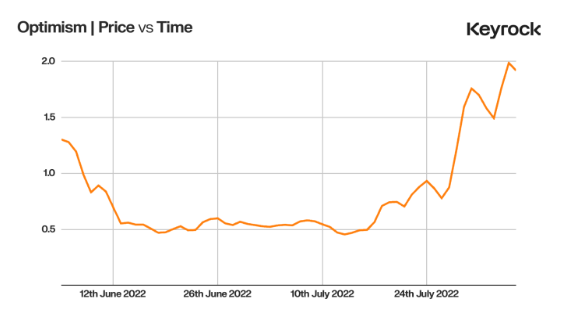
Community or public unlocks often exhibit mixed impacts, with many tokens held or sold by recipients, reflecting moderate price pressures. On the other hand, burn unlocks are rare and, therefore, excluded from the analysis.
Key Takeaways: Patterns and Strategies Around Unlocks
Meanwhile, two phenomena frequently drive pre-token unlock price suppression. First, is retail anticipation, where traders sell early to avoid dilution, further driving down prices. Second, is institutional hedging, where sophisticated holders preemptively lock in prices, minimizing their impact on unlock days.
Post-unlock, prices often stabilize within two weeks as market dynamics adjust. For ecosystem development unlocks, the stabilization is coupled with tangible growth benefits, as seen in projects like Optimism, which effectively used token unlocks to fund ecosystem expansion.
“Optimism’s strategy following its aggressive June 2022 unlock offers a textbook example of how ecosystem unlocks, when well-designed, can drive both immediate utility and long-term growth. Despite an initial selloff, Optimism demonstrated how aligning unlocks with targeted incentives can transform a supply shock into a springboard for expansion,” an excerpt from the research stated.
eyrock’s research highlights the importance of monitoring unlock schedules and understanding recipient behavior. For traders, timing is crucial. Exiting positions 30 days before major unlocks and re-entering 14 days later can reduce risks and maximize returns. For projects, carefully planned unlock schedules and strategies, such as phased releases and liquidity support, can minimize market disruptions and align with long-term growth objectives.
Disclaimer
In adherence to the Trust Project guidelines, BeInCrypto is committed to unbiased, transparent reporting. This news article aims to provide accurate, timely information. However, readers are advised to verify facts independently and consult with a professional before making any decisions based on this content. Please note that our Terms and Conditions, Privacy Policy, and Disclaimers have been updated.
Market
Report Alleges Massive Meme Coin Sniping on Pump.fun
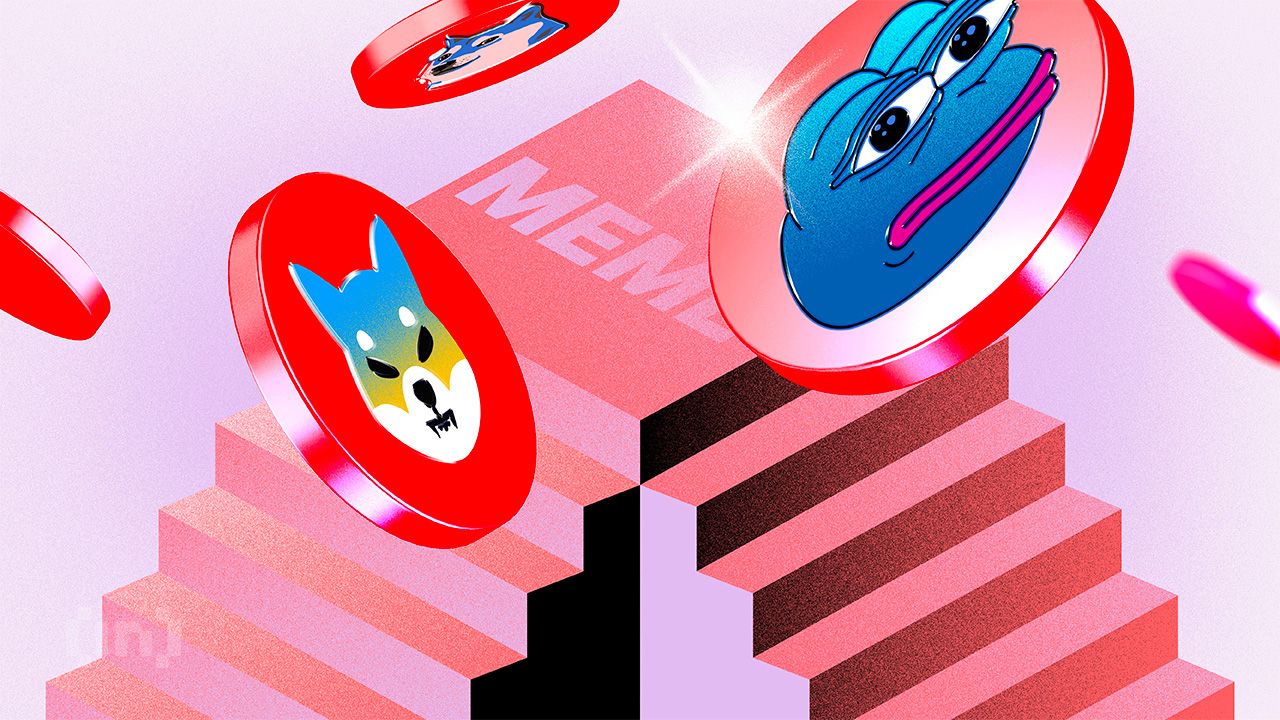
According to a new report from Pine Analytics, token deployers on Pump.fun systematically funded sniper wallets to buy their own meme coins. This impacted over 15,000 token launches on the platform.
These sniper wallets operated primarily during US trading hours, executing standardized, profitable strategies. Unrelated bot activity obscures their behavior, making it extremely difficult to isolate these wallets—and they can readily adapt to new countermeasures.
Snipers Roam Free on Pump.fun Meme Coins
Pump.fun has remained one of the most popular meme coin launchpads on Solana despite persistent controversies and other criticism.
However, Pine Analytics’ new report has uncovered a new controversy, discovering systematic market manipulation on the platform. These snipes include as much as 1.75% of all launch activity on Pump.fun.
“Our analysis reveals that this tactic is not rare or fringe — over the past month alone, more than 15,000 SOL in realized profit was extracted through this method, across 15,000+ launches involving 4,600+ sniper wallets and 10,400+ deployers. These wallets demonstrate unusually high success rates (87% of snipes were profitable), clean exits, and structured operational patterns,” it claimed.
Solana meme coin deployers on Pump.fun follow a consistent pattern. They fund one or more sniper wallets and grant them advance notice of upcoming token launches.
Those wallets purchase tokens in the very first block and then liquidate almost immediately—85% within five minutes and 90% in just one or two swap events.

Pump.fun meme coin developers exploit this tactic to create the appearance of immediate demand for their tokens. Retail investors, unaware of the prior sell‑off, often purchase these tokens after the snipe, giving developers an unfair advantage. This constitutes market manipulation and erodes trust in the platform.
Pine Analytics had to carefully calibrate its methods to identify genuine snipers. Apparently, 50% of meme coin launches on Pump.fun involve sniping, but most of this is probably bots using the “spray and pray” method.
However, by filtering out snipers with no direct links to developer wallets, the firm missed projects that covered their tracks through proxies and burners.
In other words, the meme coin community does not have adequate defenses against systematic abuse on Pump.fun. There are a few possible ways that the platform could flag repeat offenders and sketchy projects, but adaptive countermeasures could defeat them. This problem demands persistent and proactive action.
Unfortunately, it may be difficult to enact such policies. Meme coin sniping is so systematic that Pump.fun could only fight it with real commitment.
Analysts think that building an on-chain culture that rewards transparency over extraction is the best long-term solution. A shift like that would be truly seismic, and the meme coin sector might not survive it.
Disclaimer
In adherence to the Trust Project guidelines, BeInCrypto is committed to unbiased, transparent reporting. This news article aims to provide accurate, timely information. However, readers are advised to verify facts independently and consult with a professional before making any decisions based on this content. Please note that our Terms and Conditions, Privacy Policy, and Disclaimers have been updated.
Market
Solana Leads Blockchain Metrics as SOL Momentum Builds

Solana (SOL) continues to show strength across multiple fronts, maintaining a bullish structure on its Ichimoku Cloud chart while gaining momentum in key market metrics. The BBTrend indicator has turned higher again, signaling renewed buying pressure after a brief cooldown.
On-chain activity remains strong, with Solana leading all blockchains in DEX volume and dominating fee generation thanks to the explosive growth of meme coins and launchpad activity. With SOL now trading above a key resistance level, the path is open for further upside—though a loss of momentum could still trigger a retest of lower supports.
Solana Maintains Bullish Structure, but Momentum Faces Key Test
On Solana’s Ichimoku Cloud chart, the price is currently above the Kijun-sen (red base line) but has dipped below the Tenkan-sen (blue conversion line), signaling weakening short-term momentum.
The flattening Tenkan-sen and price behavior suggest possible consolidation or the early stages of a pullback. Still, with the price holding above the Kijun-sen, medium-term support remains intact.
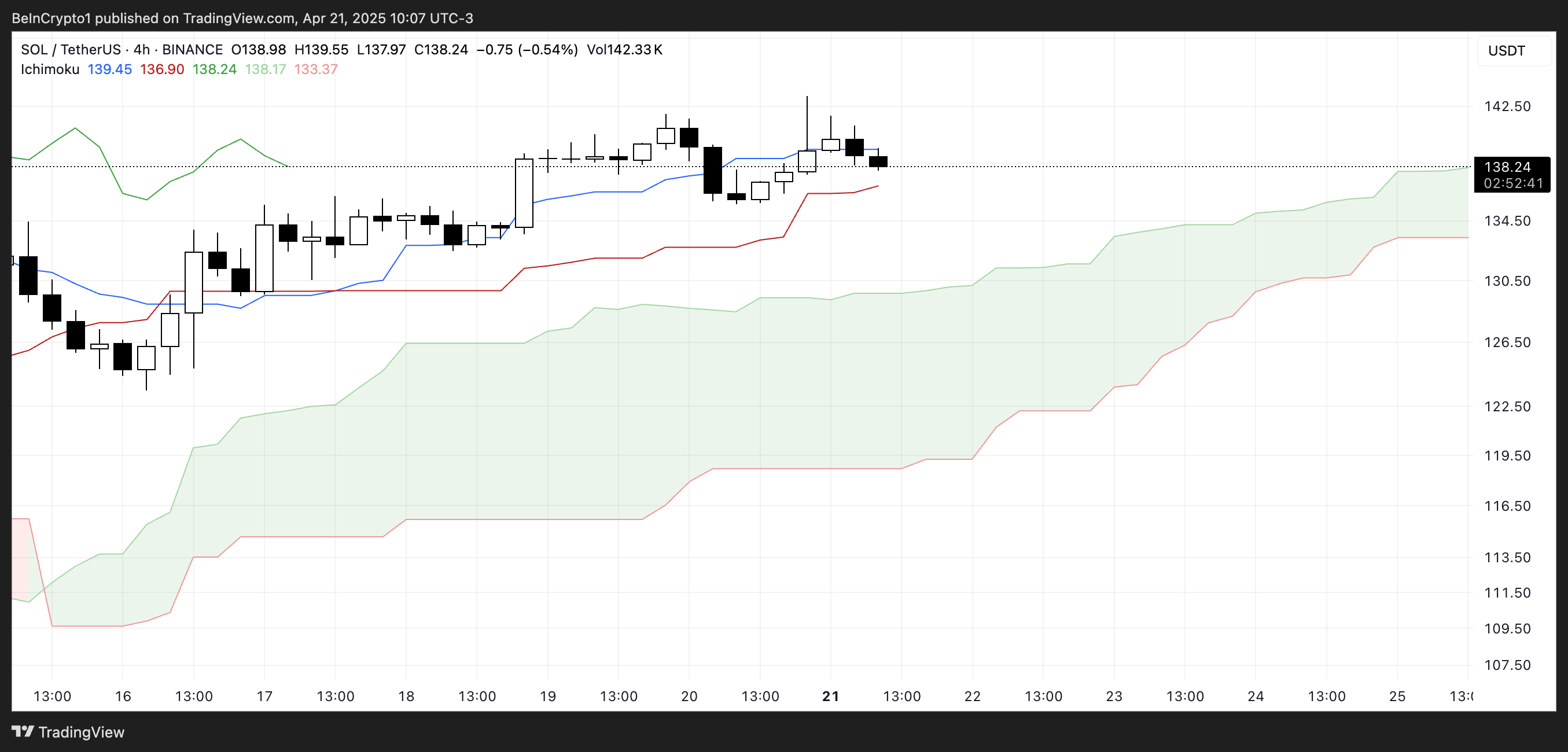
The overall Ichimoku structure remains bullish, with a thick, rising cloud and leading span A well above span B—indicating strong underlying support.
If Solana finds support at the Kijun-sen and climbs back above the Tenkan-sen, the uptrend could regain strength; otherwise, a test of the cloud’s upper boundary may follow.

Meanwhile, Solana’s BBTrend is currently at 6, extending nearly ten days in positive territory after peaking at 17.5 on April 14. The recent increase from 4.26 to 6 suggests renewed bullish momentum following a brief cooldown.
BBTrend, or Bollinger Band Trend, tracks the strength of price movement based on Bollinger Band expansion.
Positive values like the current one point to an active uptrend, and if the BBTrend continues to rise, it could signal stronger momentum and potential for another upward move.
Solana Dominates DEX Volume and Fee Generation as Meme Coins Drive Ecosystem Growth
Solana has once again claimed the top spot among all chains in DEX volume, recording $15.15 billion over the past seven days. The combined total of Ethereum, BNB, Base, and Arbitrum reached $22.7 billion.

In the last 24 hours alone, Solana saw $1.67 billion in volume, largely fueled by its booming meme coin ecosystem and the ongoing launchpad battle between PumpFun and Raydium. Adding to this good momentum, Solana recently surpassed Ethereum in Staking Market Cap.

When it comes to application fees, Solana’s momentum is just as clear. Four of the top ten fee-generating apps over the past week—PumpFun, Jupiter, Jito, and Meteora—are Solana-focused.
Pump leads the pack with nearly $18 million in fees alone.
Solana Breaks Key Resistance as Uptrend Targets Higher Levels, but Risks Remain
Solana has finally broken above its key resistance at $136, flipping it into a new support level that was successfully tested just yesterday.
Its EMA lines remain aligned in a bullish setup, suggesting the uptrend is still intact.
If this momentum continues, SOL price could aim for the next resistance zones at $147 and $152—levels that, if breached, open the door to a potential move toward $179.
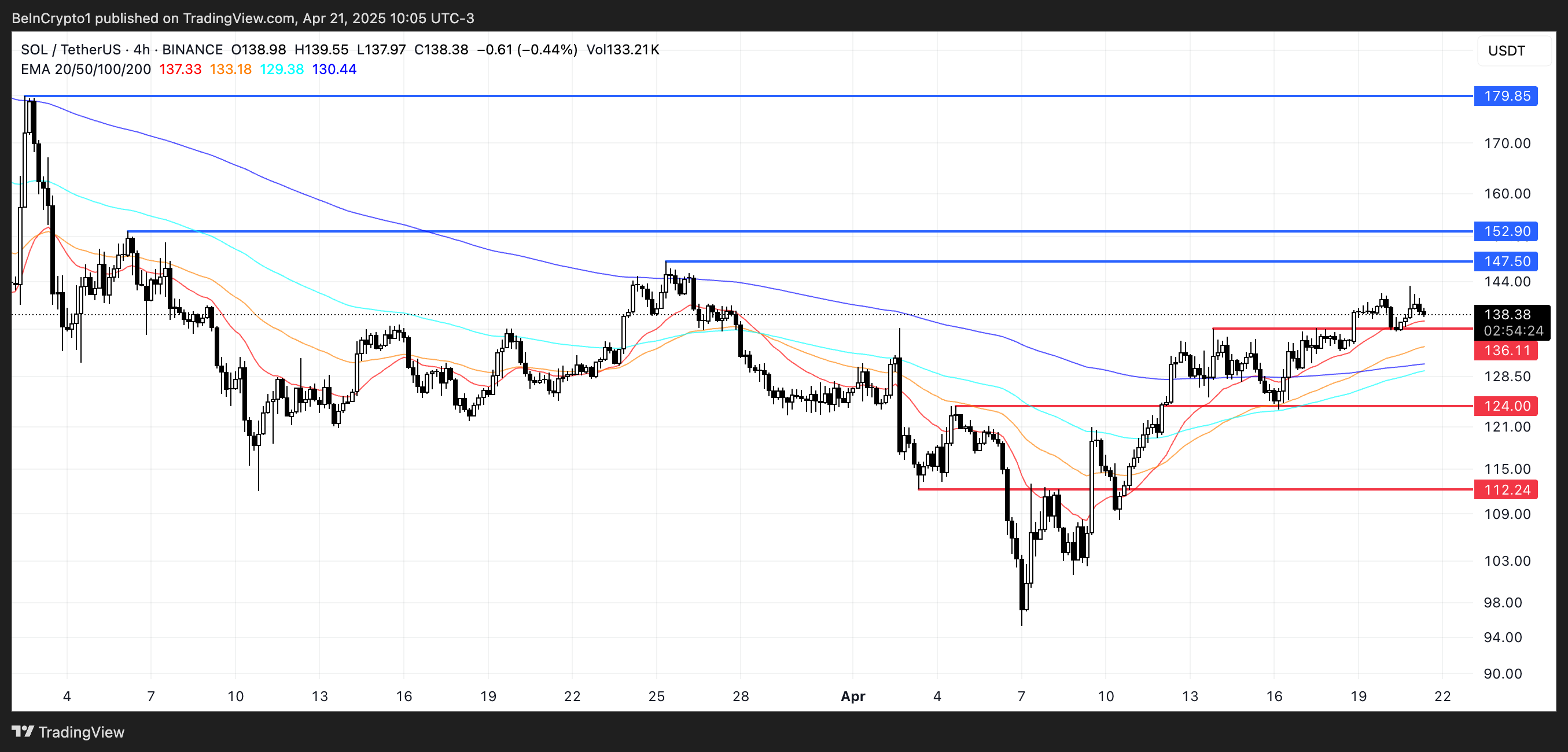
The current structure favors buyers, with higher lows and strong support reinforcing the trend.
However, if momentum fades, a retest of the $136 support is likely.
A breakdown below that level could shift sentiment, exposing Solana to deeper pullbacks toward $124 and even $112.
Disclaimer
In line with the Trust Project guidelines, this price analysis article is for informational purposes only and should not be considered financial or investment advice. BeInCrypto is committed to accurate, unbiased reporting, but market conditions are subject to change without notice. Always conduct your own research and consult with a professional before making any financial decisions. Please note that our Terms and Conditions, Privacy Policy, and Disclaimers have been updated.
Market
Crypto Firms Donated $85 million in Trump’s Inauguration

According to a new report, 15 firms and individuals from the crypto industry donated more than $100,000 to President Trump’s Inauguration, totaling over $85 million.
Almost all of these companies apparently received direct or indirect benefits from Trump’s administration. This includes dropped legal proceedings, lucrative business partnerships, participation in Trump’s Crypto Summit, and more.
Crypto Industry Went All-In on Trump’s Inauguration
Since promising to bring friendlier regulations on the campaign trail, Donald Trump attracted a reputation as the Crypto President.
Trump’s Inauguration festivities included a “Crypto Ball,” and several prominent firms made donations for these events. Today, a report has compiled all crypto-related contributions of over $100,000, revealing some interesting facts.

Since taking office, President Trump and his family have been allegedly involved in prominent crypto controversies, and these donations may be linked to several of them.
For example, eight of the donors, Coinbase, Crypto.com, Uniswap, Yuga Labs, Kraken, Ripple, Robinhood, and Consensys, had SEC investigations or lawsuits against them closed since Trump’s term began.
The commission might have dropped its probe against these companies anyway due to its changing stance on crypto enforcement. However, being in the President’s good books likely helped the process.
Further Alleged Benefits for Donors
In other words, nearly half the firms that made donations to Trump’s Inauguration have seen their legal problems cleared up quickly. This isn’t the only regulation-related benefit they allegedly received.
Circle, for example, recently made an IPO after openly stating that Trump’s Presidency made it possible. Galaxy Digital received SEC approval for a major reorganization, a key step for a NASDAQ listing.
Other donors, such as Crypto.com and ONDO, got more direct financial partnerships with businesses associated with the Trump family.
Previously, Ripple’s CEO, Brad Garlinghouse, anticipated a crypto bull market under Trump. Also, XRP, Solana, and Cardano were all unexpectedly included in the US Crypto Reserve announcement.
All three of these companies made major donations to Trump’s Inauguration.
It seems that most of the firms involved got at least some sort of noticeable benefit from these donations. Donors like Multicoin and Paradigm received invitations to Trump’s Crypto Summit, while much more prominent groups like the Ethereum Foundation got snubbed.
Meanwhile, various industry KOLs and community members have already alleged major corruption in Trump’s crypto connections.
While some allegations might lack substantial proof, the crypto space has changed dramatically under the new administration, for both good and bad.
Disclaimer
In adherence to the Trust Project guidelines, BeInCrypto is committed to unbiased, transparent reporting. This news article aims to provide accurate, timely information. However, readers are advised to verify facts independently and consult with a professional before making any decisions based on this content. Please note that our Terms and Conditions, Privacy Policy, and Disclaimers have been updated.























